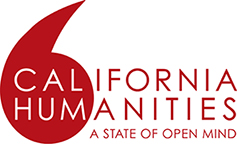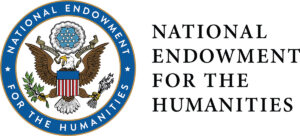About History of the Riverside Art Museum
History
In the early 1950s, a loosely knit group of artists formed the Riverside Art Association to encourage the study and appreciation of the arts. Their first home, the Riverside Art Center, was a recently abandoned Municipal Dog Pound which City of Riverside officials leased to the Art Association for $1 a year.
By 1960, the growing Association clearly needed more space for its studio classes and numerous exhibitions. When architect Julia Morgan’s 1929 Riverside YWCA building became available for sale, the Association purchased it for $250,000. A successful fund drive followed and on July 5, 1967, YWCA officials formally turned over Morgan’s building. The transition from a YWCA building to the existing art museum was soon underway.
In 1982, the building was placed on the National Register of Historic Places and was designated a Historic Landmark by the City of Riverside.
In 1990, museum trustees began a campaign to obtain funds for capital improvements. With generous assistance from the City of Riverside, the goal of $1,250,000 was attained in 1991. The following year, extensive renovations produced a sophisticated climate control system, increased exhibition space, collection storage, and an office at the back entry of the building. The garden atrium was weatherproofed with the addition of a glass roof and the kitchen area was extended. An upstairs library was made out of an unused bathroom space.
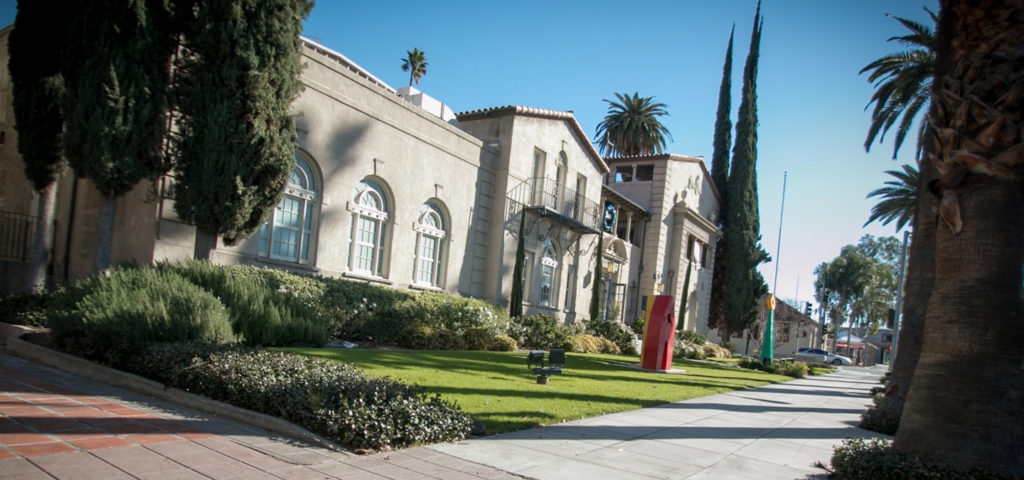
Community support for additional improvements came in 1993 when a City Block Grant and a grant from the Riverside Community Foundation funded the addition of a wheelchair ramp at the rear entrance. In 1994, a landscape renovation took place that was made possible entirely through donations of materials and labor. And in 1995, the generosity of a museum member funded the completion of the R.E. Olds Conference Room on the second floor.
The 2000s saw more renovations and repairs to maintain the functionality and beauty of our historic building.
Currently, the art museum boasts two spacious first floor galleries, two smaller second floor galleries, the R.E. Olds Conference room which houses our printmaking presses, and a second floor Mezzanine exhibition space. A Children’s Gallery and Studio Art Classroom are also located on the second floor along with administrative offices.
Although the original function of Julia Morgan’s building has changed, the spirit of its precedent-setting architect will be forever preserved in the timeless quality and beautiful design of the building. Morgan’s architecture truly stands as a testimony to her fortitude, her skill, and her brilliantly enduring sensibilities.
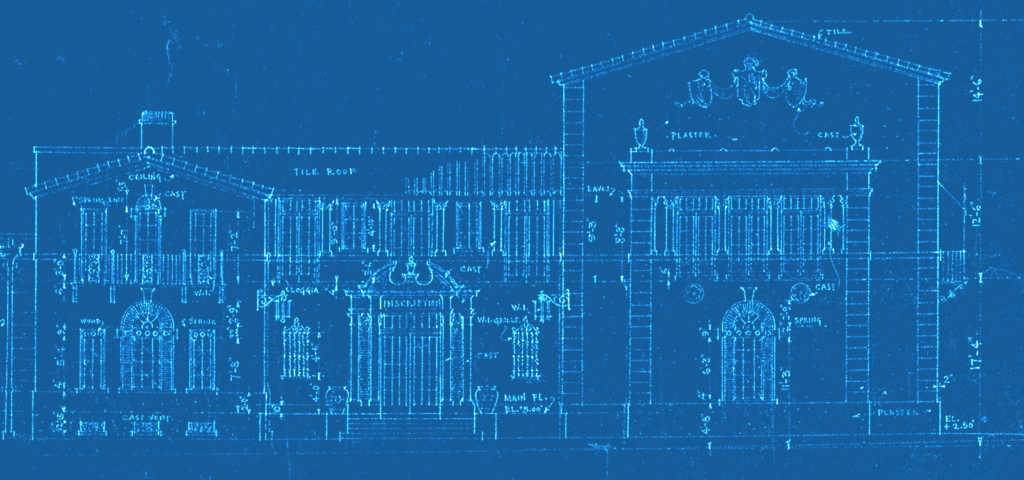
Julia Morgan, Architect
The Board of Directors of The American Institute of Architects (AIA) voted on December 12, 2013 to posthumously award the 2014 AIA Gold Medal to Julia Morgan, the architect behind such buildings as St. John’s Presbyterian Church (Berkeley), Asilomar YWCA (Pacific Grove), Hearst Castle (San Simeon), and Riverside’s own former YWCA and current home of the Riverside Art Museum.
The AIA Gold Medal, voted on annually, is considered to be the profession’s highest honor that an individual can receive. The Gold Medal honors an individual whose significant body of work has had a lasting influence on the theory and practice of architecture. Morgan’s legacy will be honored at the AIA 2014 National Convention and Design Exposition in Chicago, and have her name chiseled into the granite Wall of Honor in the lobby of the AIA headquarters in Washington, D.C.
Morgan is the first woman to win the Gold Medal, having designed over 700 buildings. “Most of them are still standing,” says Julia Donoho, the AIA board member who nominated Morgan for the Gold Medal. Donoho spoke at RAM’s annual Julia Morgan Reception, held this year at RAM Board Member’s Cathy Kienle’s home, telling the invitees that she nominated Morgan because she felt that it was past time to award the AIA Gold Medal to a female architect.
Morgan was born in San Francisco on January 20, 1872 and attended the University of California, Berkeley beginning in 1890. In 1894, she became the first woman to graduate from the university with a degree in civil engineering.
While studying at Berkeley, professor and celebrated architect Bernard Maybeck (1862-1957) recognized Morgan’s great intellect and potential. Maybeck hired Morgan to work in his studio and became her lifetime mentor, advisor, and close friend. It was Maybeck who suggested that she attend the Ecole des Beaux-Arts, the most prominent architecture school of its day, and eventually Morgan became the first woman admitted to the school. In 1902, in her thirtieth year, Morgan returned to Oakland with her certification of completion and immediately began to work for architect John Galen Howard. In 1904, she became the first woman licensed to practice architecture in California, and opened her own firm.
In the midst of our beautiful city of Riverside, we have a Morgan-designed landmark treasure. Built in 1929 in a unique mixture of Mediterranean and Classical revival styles, the Riverside YWCA on the corner of Lime and Mission Inn incorporated practicality, convenience, and elegant simplicity in an innovative tri-block design, constructed with reinforced, poured-in-place concrete. This design is unique among the 17 YWCA’s Morgan designed. The movement and interest created by the tri-block design works not only on the exterior of the building, but also on the two interior floors. Originally, the first floor housed an indoor swimming pool, dressing rooms, and showers with an entrance lobby that faced out onto an open atrium garden. A large gymnasium and stage occupied the remaining ground-floor space. The second floor contained bedrooms, offices, and a versatile meeting room with a small stage. Concealed stairs led to a roof garden that featured an outdoor fireplace, an expansive view of downtown Riverside, and ample space for badminton games. Morgan’s building successfully functioned as Riverside’s YWCA for nearly 40 years.
The building’s distinctive architecture as a work of art in its own right brought it to the attention of the Riverside Art Center in the 1960s. Purchased from the YWCA on July 5, 1967, Morgan’s building became the proud home of the Riverside Art Museum.
“As an architect and President of the Board of Trustees, I am honored that RAM can call this beautiful Julia Morgan building home,” says Bob Kain.
By happy coincidence, the day after the AIA announcement, the HMC Designing Futures Foundation board of directors awarded RAM a $10,000 grant to support the renovation of RAM’s Julia Morgan History Wall and the creation of didactics throughout the museum highlighting the building’s architectural elements, citing RAM’s role as an important cultural and artistic resource in the community.
“This grant will allow the Riverside Art Museum to refresh the existing Julia Morgan History Wall to truly showcase her contributions to the architectural profession and the Riverside community through her innovative design vision and building construction explorations,” says Dan Benner, RAM Trustee and principal architect at HMC. “Her perseverance in wanting to make a difference within the communities she served during her life is her legacy and will be honored with a retrospective approach that celebrates her achievements.”
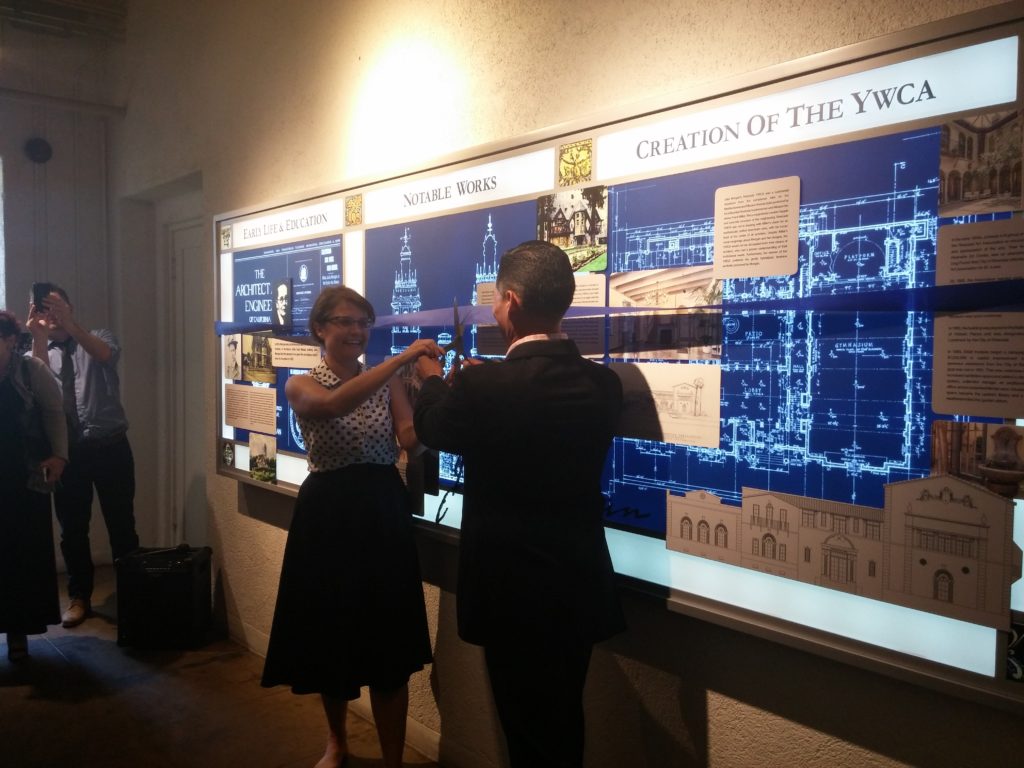
In addition, long-standing community support from the E. Rhodes and Leona B. Carpenter Foundation, Provident Savings Bank Foundation, the Johnson Foundation, and private donors have supported RAM’s stewardship of this important historic structure.
In letters of recommendation for the award, Frank Gehry called Morgan “an architect’s architect,” and Denise Scott Brown referred to her buildings’ “modest monumentality and tender gravitas, beautifully executed.”
Senator Dianne Feinstein (D-CA) in her recommendation letter stated that Morgan, “is unquestionably among the greatest American architects of all time and true California gem. Morgan’s legacy has only grown over the years. She was an architect of remarkable breadth, depth, and consistency of exceptional work, and she is widely known by the quality of her work by those who practice, teach, and appreciate architecture.”
Morgan joined the AIA in 1921 as only the seventh female member. She is the 70th AIA Gold Medalist and joins the ranks of such visionaries as Frank Lloyd Wright (1949), Le Corbusier (1961), Louis I. Kahn (1971), I.M. Pei (1979), and Thom Mayne (2013).
The Cheech Center Is Born
It all started with bringing the exhibition, Papel Chicano Dos: Works on Paper from the Collection of Cheech Marin to the Riverside Art Museum, to the Riverside Art Museum, a nonprofit, non-governmental art institution, in 2017.
This exhibition, supported by Altura Credit Union and the City of Riverside, presented 65 artworks by 24 established and early-career artists whose work demonstrates a myriad of techniques from watercolor and aquatint to pastel and mixed media.
The opening reception attracted 1,476 attendees. Admission sales for the day broke records, and admission revenue for the first month of the exhibit was triple the normal amounts.
This led to a unique proposition from the City of Riverside: a public-private partnership between RAM, the City of Riverside, and comedian Cheech Marin—one of the world’s foremost collectors of Chicano art—to create The Cheech Marin Center for Chicano Art & Culture of the Riverside Art Museum in a soon-to-be-vacant City building in the heart of downtown. The partnership called for Marin’s collection to be donated to RAM for the creation of The Cheech and the establishment of a management contract between the City and RAM through which RAM would provide all staffing, management, marketing, and curatorial services for The Cheech.
Under the umbrella of RAM, The Cheech will be the “center of Chicano art, not only for painting, but for sculpture, photography, and video arts.” The 61,420-square-foot center will house hundreds of paintings, drawings, photographs, and sculptures by artists including Patssi Valdez, Sandy Rodriguez, Carlos Almaraz, Frank Romero, and Gilbert “Magú” Luján.
The Cheech Center opened on June 18, 2022. Click here to learn more.
We gratefully acknowledge Recovery Grant capacity-building support for the enhancement of public humanities programming.
